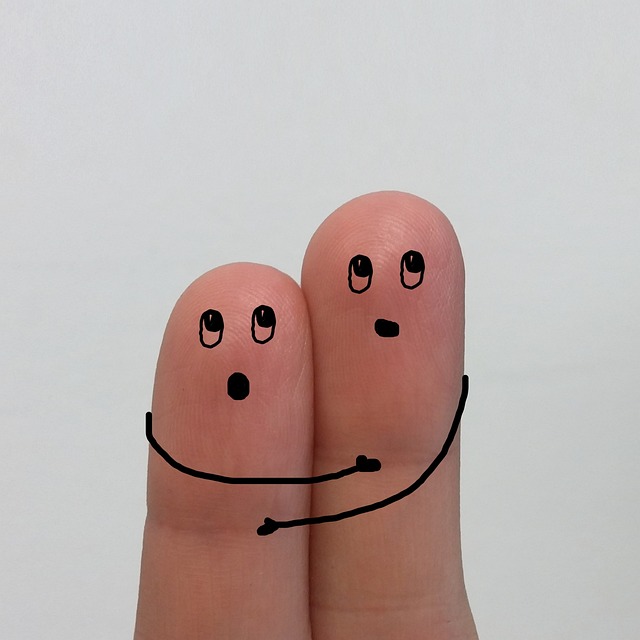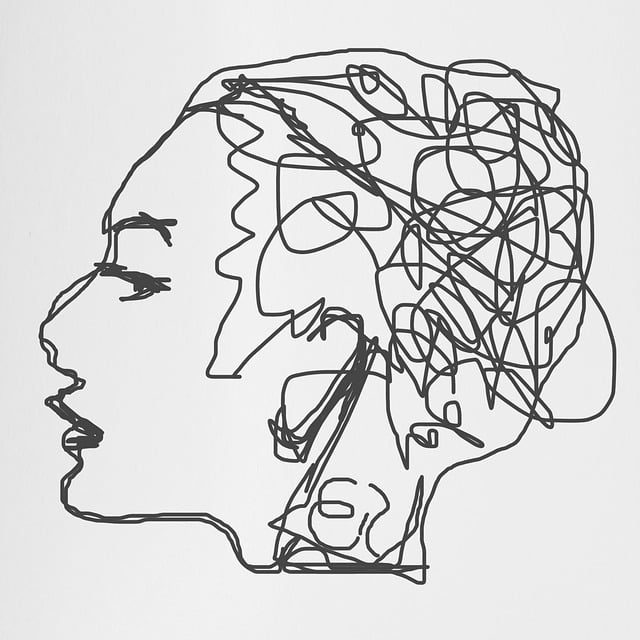Psychoeducational therapy is an effective approach to anxiety treatment that combines psychological interventions with education. By understanding triggers, challenging negative thoughts, and learning coping skills, individuals gain control and self-efficacy over their anxiety. This method empowers clients with knowledge about anxiety disorders, leading to improved well-being and reduced symptoms. Combining psychoeducation with evidence-based techniques like CBT and mindfulness offers a comprehensive anxiety treatment strategy for long-term success.
Anxiety, a common mental health concern, can significantly impact daily functioning. This article explores psychoeducational therapy as an effective anxiety treatment. We delve into its fundamentals, understanding how anxiety manifests in everyday life, and uncovering common triggers. The piece highlights the unique approach of psychoeducational therapy, detailing techniques to manage symptoms. We also present success stories, offer guidance for the first session, and discuss potential challenges. Additionally, we explore combining this therapy with other treatments for comprehensive anxiety treatment strategies.
Understanding Psychoeducational Therapy

Psychoeducational therapy is a highly effective approach for managing and overcoming anxiety disorders. This form of therapy combines psychological methods with educational strategies to help individuals understand their anxiety, challenge unhelpful thoughts and beliefs, and develop practical coping skills. By delving into the underlying causes and triggers of anxiety, clients gain valuable insights into their thought patterns and behaviors.
In the context of anxiety treatment, psychoeducation equips individuals with knowledge about anxiety disorders, including their symptoms, diagnosis, and available treatment options. This empowers clients to actively participate in their healing process, fostering a sense of control and self-efficacy. Through interactive discussions, learning resources, and practical exercises, individuals learn to manage stress, face fears, and adopt healthier ways of thinking and behaving.
The Role of Anxiety in Daily Life

Anxiety, a common yet powerful emotion, plays a significant role in our daily lives, influencing how we think, feel, and act. While feeling anxious from time to time is normal and can even be beneficial for motivation and focus, chronic or excessive anxiety can significantly impact an individual’s overall well-being and functioning. In today’s fast-paced world, many people experience heightened levels of stress and anxiety due to various factors such as work pressure, financial constraints, or personal relationships. This can lead to difficulties in managing daily tasks, maintaining social connections, and achieving one’s full potential.
Understanding and managing anxiety effectively is crucial for improving quality of life. Psychoeducational therapy offers a comprehensive approach to anxiety treatment by providing individuals with the knowledge and skills needed to recognize and challenge anxious thoughts and behaviors. By learning coping strategies and mindfulness techniques, clients can navigate their daily lives with greater ease, ensuring that anxiety no longer serves as a roadblock to personal growth and fulfillment.
Common Causes and Triggers of Anxiety

Anxiety, a pervasive emotion that can significantly impact daily life, often arises from a complex interplay of genetic predisposition and environmental factors. Common causes include a history of trauma, stress from significant life events, or chronic exposure to demanding situations. These triggers can lead to an overactive fear response in the body, causing symptoms like increased heart rate, difficulty breathing, and a sense of impending doom.
Understanding these initiators is crucial in anxiety treatment, as it allows for tailored psychoeducational therapy approaches. By identifying specific triggers, individuals can learn coping mechanisms to manage their anxiety effectively, thereby enhancing their overall well-being.
How Psychoeducational Therapy Can Help Manage Anxiety

Psychoeducational therapy offers a unique and effective approach to managing anxiety by combining psychological interventions with educational strategies. Through this therapy, individuals gain a deeper understanding of their anxiety triggers and learn valuable coping mechanisms tailored to their specific needs. By educating clients about anxiety disorders, therapists empower them to challenge negative thought patterns and beliefs that contribute to their distress.
This therapeutic method enables people to develop effective strategies for managing anxiety in their daily lives. It helps them recognize and modify unhelpful behaviors, fostering a sense of control and reducing the intensity of anxious symptoms. As a result, psychoeducational therapy can significantly improve overall well-being, enabling individuals to lead more fulfilling and less anxious lives.
Techniques Used in Psychoeducational Therapy for Anxiety

Psychoeducational therapy for anxiety incorporates a range of evidence-based techniques designed to help individuals understand and manage their symptoms effectively. One key approach is cognitive-behavioral therapy (CBT), which focuses on identifying and challenging negative thought patterns and behaviors contributing to anxiety. Therapists teach clients coping strategies, such as deep breathing exercises, mindfulness meditation, and progressive muscle relaxation, to help them calm themselves during anxious moments.
Additionally, psychoeducation involves teaching individuals about the nature of anxiety, including its causes, symptoms, and impact on daily life. This knowledge empowers clients to recognize triggers and understand that their anxiety is a common human experience. Through this process, they gain valuable insights into their condition, fostering self-acceptance and resilience in the face of anxiety.
Benefits and Success Stories of This Treatment Approach

Psychoeducational therapy offers a unique and effective approach to treating anxiety, empowering individuals with knowledge and skills to manage their condition. One of its key benefits is that it helps clients understand the connection between thoughts, feelings, and behaviors, allowing them to challenge and reframe negative thought patterns. This process promotes emotional regulation and fosters a sense of control over anxious responses.
Success stories abound, with many individuals reporting significant improvements in their anxiety levels and overall well-being. Through psychoeducation, they gain insights into the underlying causes of their anxiety, learn coping strategies, and develop healthier ways of thinking and behaving. This evidence-based method not only provides short-term relief but also equips clients with lifelong tools to navigate future challenges, making it a powerful resource for those seeking lasting solutions to anxiety treatment.
Preparing for Your First Session: What to Expect

Preparing for your first psychoeducational therapy session is an important step in your journey towards managing and overcoming anxiety. During this initial meeting, your therapist will aim to create a safe and non-judgmental space while getting to know you and understanding your unique experiences with anxiety. They’ll likely ask about your symptoms, when they started, and how they impact your daily life. Be prepared to share details about specific situations or triggers that cause you distress. This open dialogue is crucial for tailoring your therapy plan effectively.
You can support this process by reflecting on your anxiety triggers, keeping a journal of recent stressful events, and noting any coping strategies you’ve used in the past. Don’t be alarmed if some emotions come to the surface during the session; it’s normal to feel vulnerable at first. Remember, the therapist is there to guide you, and together, you’ll begin to unravel and address the root causes of your anxiety, paving the way for effective treatment and improved well-being.
Potential Challenges and Limitations to Consider

While psychoeducational therapy for anxiety has shown promising results, several potential challenges and limitations should be considered. One key hurdle is that individuals may struggle to implement coping strategies in real-world settings due to environmental or social factors beyond their control. Additionally, certain types of anxiety disorders, such as obsessive-compulsive disorder (OCD) or severe, generalized anxiety disorder, might require more specialized treatments or a combination of therapies for optimal outcomes.
Another limitation is that psychoeducational therapy can be time-consuming and demanding, requiring significant commitment from both the client and therapist. Not all individuals may have the necessary motivation, resources, or access to quality care, which can impact adherence to the treatment plan. Moreover, individual responses to therapy vary widely, and what works for one person might not be as effective for another, emphasizing the need for tailored interventions within a broader anxiety treatment framework.
Combining Psychoeducation with Other Treatments for Optimal Results

When addressing anxiety, a multi-faceted approach is often most effective. Psychoeducational therapy stands out as a powerful tool in the arsenal against anxiety disorders, providing individuals with valuable knowledge and coping strategies. This treatment method equips clients with an understanding of their condition, helping them to demystify their symptoms and reduce associated fears.
Combining psychoeducation with other evidence-based treatments like cognitive behavioral therapy (CBT) or mindfulness practices can significantly enhance anxiety treatment outcomes. This integrated approach allows for a more comprehensive addressing of the client’s needs, targeting both the understanding and management of anxiety symptoms. By educating individuals about their anxiety and empowering them with practical tools, psychoeducation serves as a foundational step, making other therapeutic interventions more effective and sustainable in the long term.
